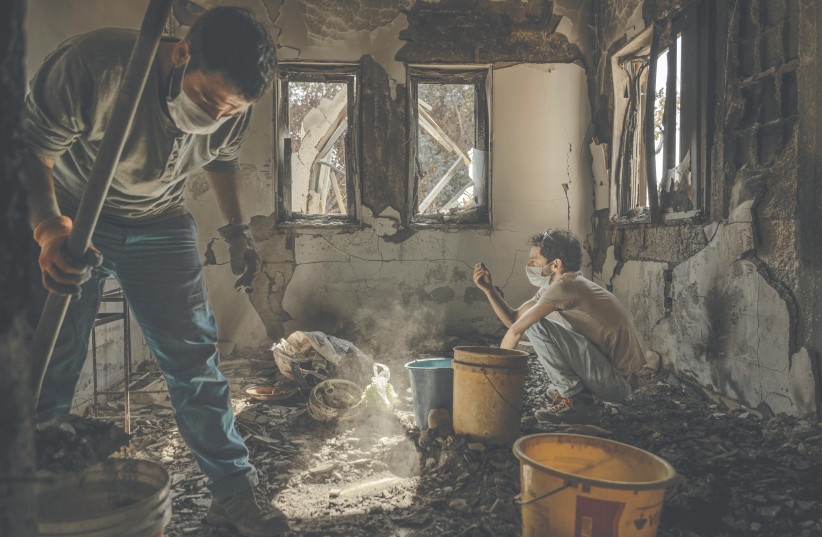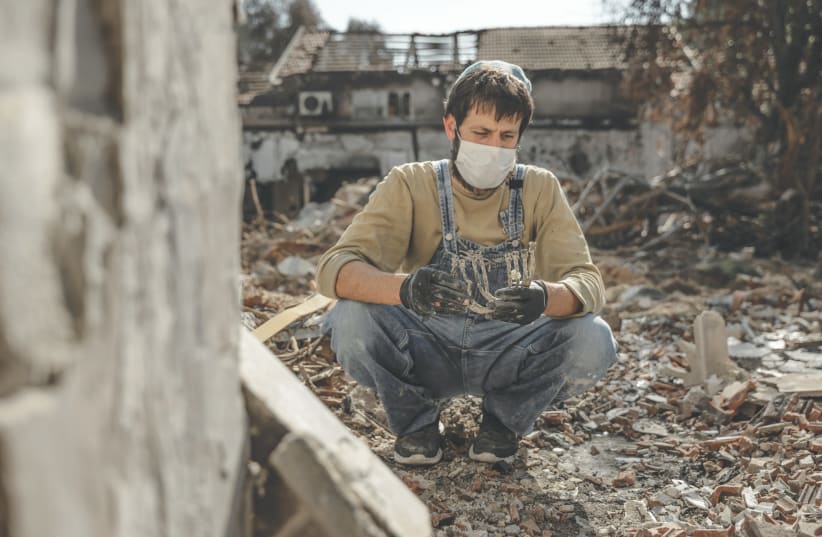In the light of the Hanukkah menorah, a haunting story unfolds of unshakable resilience and a ray of hope in the midst of darkness. The hanukkiah, with its eight flames, symbolizes a miracle from ancient times. In Jerusalem’s Holy Temple, a single day’s oil illuminated the darkness for eight days. But this year, the hanukkiah’s message resonates with an even deeper, more poignant significance.
In the aftermath of the devastating attacks on October 7 in southern Israel, my journey brought me to Be’eri, a kibbutz scarred by conflict. Here, amid the desolation, I witnessed a scene of profound sorrow and quiet strength. A man, crouching, almost kneeling, in the remnants of what was once a family home, personifies the essence of loss and perseverance. The home, now a landscape of rubble and ashes, was his wife’s family’s dwelling, a place that once echoed with the laughter of loved ones.
Clad in overalls, a light blue kippah resting gently on his head, he moves with solemn purpose through the debris. His face, partly concealed by a mask to shield him from the pervasive smell of death, is a canvas of intense emotion. His brow furrowed, his eyes a well of unspoken stories. Each movement is careful, reverential, almost sacred, as he lifts each broken, charred fragment of lives once full and vibrant.
On that day of tragedy, Simchat Torah, a time of great joy, became a time of sorrow. The house had been full, as grandparents, children, and grandchildren gathered to celebrate. But terror struck, brutally claiming the life of his wife’s father and abducting eight others. The photograph captures not just a man sifting through ruins but a soul searching for the scattered remnants of a past violently torn away.
His body, folded over amid the ruins, speaks volumes about his inner turmoil – a blend of despair, anguish, determination, and the need to connect with the fragments of his shattered world. As he sifts through the remnants, each piece he touches is a connection to a memory, a moment in time that once was.


And then, amid this solemn ceremony, he makes a stark, poignant discovery. His hands, blackened with soot, uncover a hanukkiah. This single eight-branched menorah is twisted and contorted, a stark symbol of the horror that befell his family, bearing the scars of the tragedy. Found amid the wreckage, it encapsulates the essence of the Hanukkah message. It is not just a relic of a home lost; it is an emblem of light persevering in the darkest of times. The twisted menorah speaks to the endurance of the human spirit amid unimaginable trials and grief.
The spirit of Hanukkah in the runs of Hamas's massacre
As the man cradles this symbol of his family’s past, the scene captures the heart of the Hanukkah spirit. It is a reminder that even in the depths of despair, the indestructible light of hope, tradition, and resilience flickers on. In the discovery of this hanukkiah, we see a reflection of our own ability to find strength and light, even when surrounded by the ashes of destruction.
This Hanukkah, as we light our candles, we are reminded of more than that long-ago historical miracle; we are called to recognize the enduring flame of hope that burns even in the darkest of times. In that man’s cradling of this twisted hanukkiah, we find a powerful symbol of unwavering resilience and the inextinguishable light of the human spirit. It stands as a profound testament to our capacity to find light amid darkness, to kindle and keep alive the light of hope when black despair seems all-consuming.
As each flame flickers, our hanukkiot vibrate with the message that it is in our darkest moments that the light of hope and enduring faith shines the brightest.
